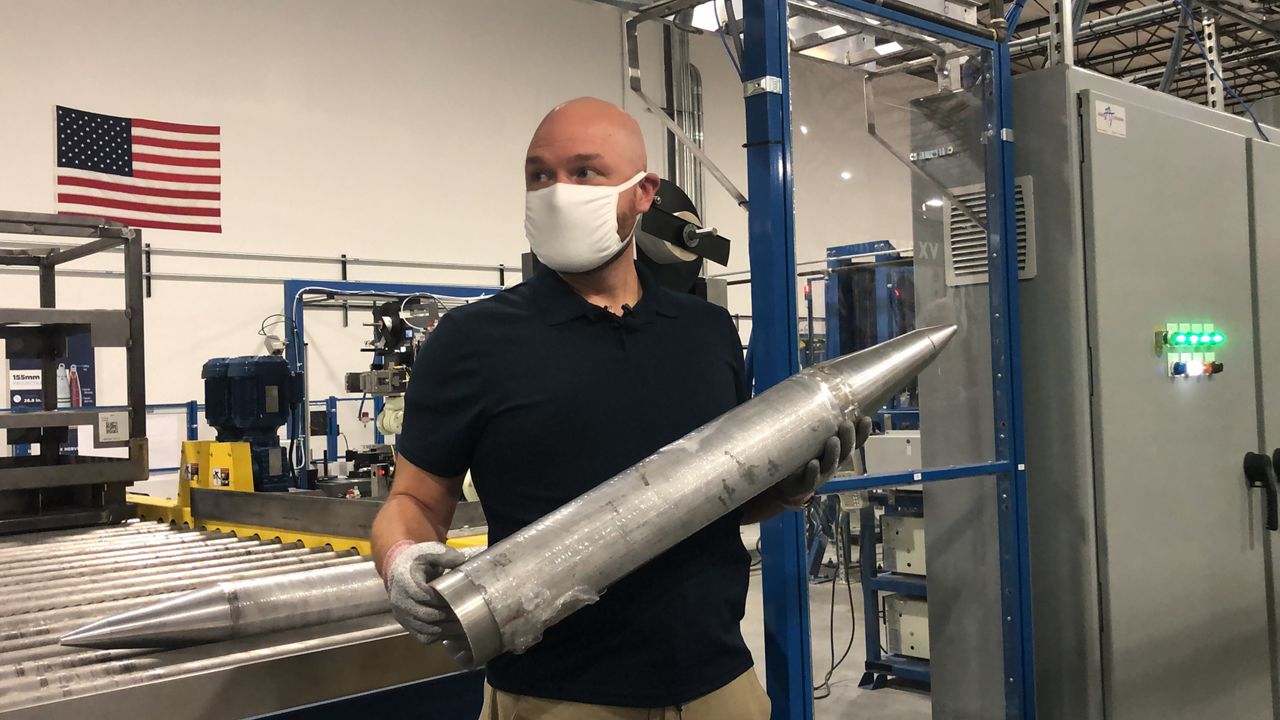RICHMOND, Ky. — Rockets that contain the chemical weapon VX nerve agent are being destroyed by the Blue Grass Chemical Agent Destruction Pilot Plant.
What You Need To Know
- The Blue Grass Chemical Agent-Destruction Pilot Plant (BGCAPP) has started destroying the VX Nerve agent rockets
- It's part of a treaty agreement to which the United States committed
- It took place during the Chemical Weapons Convention in 1986
- The site destroys chemical weapons that contain mustard, nerve and sarin agents
The Blue Grass Chemical Agent-Destruction Pilot Plant started their fourth out of five campaigns to destroy chemical weapons in the United States.
"So this is what the warhead will look like, whenever we wrap it," said Josh Taylor, a training specialist.
He's showing a demonstration of how the VX nerve agent rockets that are being destroyed.
"You will see our agent robot pick it up, and that will be one of our inspection points to be sure that none of the agent is leaking outside of the warhead," Taylor said.
The demonstration is happening in two simulation rooms to mimic the actual destruction of chemical weapons in Central Kentucky on site.

"The U.S. had an entire stockpile across several sites. These are down to the last two now," said Candace Coyle, project site manager at BGCAPP.
She explains that the United States has a treaty obligation to destroy all chemical weapons by the year 2023.
It’s part of a multi-nation treaty initiated in 1986 during the Chemical Weapons Convention, adopted in 1992, and enforced in 1997.
"This is very important not just to preserve the safety of the county and the Commonwealth of Kentucky, but also on a world and global scale to be able to handle and destroy all these munitions so we can eradicate this threat across the world," Coyle said.
Overall, the site handles three chemical agents: mustard, nerve, and sarin agents. These are stored in various weapon vessels such as a projectile or a rocket and go through their own destruction process.
"This is different than the other sites in the sense that previous sites use incineration, as the way that they would get rid of all of their stockpile. There was a decision to take a more environmental approach to it, which is why we have first of a kind technologies here in Kentucky, to take care of rockets and projectiles," Coyle said.
She said, ideally, they destroy one weapon group at a time but made an exception with safety in mind.
"Because the mustard projectiles are being processed in a separate facility on site. the static detonation chamber, we do have for the first time in history, more than one agent running at the same time," Coyle said.
The original stockpile contained 523 tons of chemical agent weapons.
Now, the BGCAPP has destroyed 154 tons of chemical weapons. That’s almost 30% of the whole stockpile.



